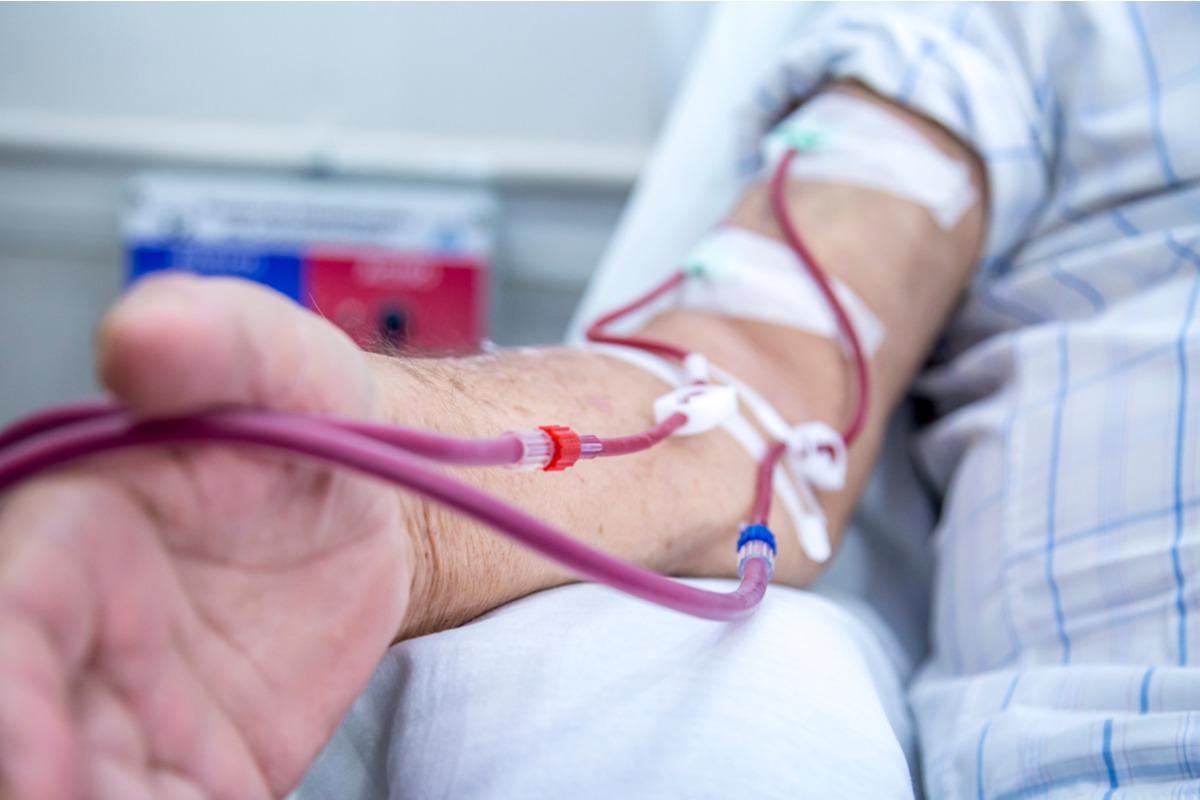To prevent infection from severe acute respiratory syndrome coronavirus 2 (SARS-CoV-2) or at minimum provide protection against severe complications associated with coronavirus disease 2019 (COVID-19), resulting in hospitalization, the durability of vaccination-induced cellular and humoral immune responses is critical.
 Study: Diminishing Immune Responses against Variants of Concern in Dialysis Patients 4 Months after SARS-CoV-2 mRNA Vaccination. Image Credit: mailsonpignata/Shutterstock
Study: Diminishing Immune Responses against Variants of Concern in Dialysis Patients 4 Months after SARS-CoV-2 mRNA Vaccination. Image Credit: mailsonpignata/Shutterstock
The SARS-CoV-2 vaccination approach in Germany, like many other nations, was prioritized based on an individual’s occupation, underlying comorbidities, or increased age. Even though those prioritized subgroups have received the vaccine, there is a disagreement on whether a third booster dose is needed to sustain or increase levels of protection in some of these populations.
In Germany, there are currently approximately 80,000 hemodialysis patients, and this group of individuals is at a particularly increased risk of SARS-CoV-2 infection and severe COVID-19. Underlying comorbidities and dialysis treatment can often induce a state of immunosuppression in hemodialysis patients. The nature of dialysis treatment requires frequent visits to healthcare settings, which puts patients at further risk due to increased exposure to the infection.
SARS-CoV-2 and hemodialysis patients
In this study, a group of researchers from various institutions provided follow-up data for a previous study that examined systemic B and T cell responses 16 weeks after BNT162b2 vaccination, and also the potency of vaccine-induced neutralizing antibodies in a cohort of 76 hemodialysis patients and 23 healthcare workers with no comorbidities.
Due to the emergence of variants of concern (VOC), and the fact that every licensed SARS-CoV-2 vaccine was developed to protect against the original wild-type strain, the authors also investigated antibody binding and neutralization toward the current VOCs (Alpha, Beta, Gamma, and Delta).
The authors took blood samples from the dialysis patients and the control group 16 weeks after the standard 2-dose BNT162b2 immunization with a 21-day interval (T2). The longitudinal follow-up included 76 patients on maintenance hemodialysis and 23 healthcare personnel from the same healthcare setting. The authors used an S-Monovette lithium heparin blood collection kit to collect plasma. Interferon-γ (IFN-γ) release assays (IGRA) were performed on whole-blood samples. To inactivate possible microorganisms, saliva samples were treated with a final concentration of 0.3% Tri (n-butyl) phosphate and a final concentration of 1% Triton X-100.
Substantial decrease in antibody titers
Due to the level of antibodies being a good indicator of protection, the researchers used MULTICOV-AB, a previously published bead-based multiplex immunoassay that analyzes over 20 different SARS-CoV-2 antigens at once, including VOC receptor-binding domains (RBDs). RBD IgG responses to SARS-CoV-2 wild-type RBD in the dialysis group were substantially lower than in the control group 16 weeks following full immunization. Antibody titers had dramatically decreased by 61% in the control group and 75% in the dialysis group at 16 weeks after the second dosage, compared to levels at 3 weeks after the second dose.
Decreased neutralization capacity following vaccination
The authors next examined whether the potential neutralization was inhibited because solid evidence exists on the protective role for neutralizing serum antibodies. The authors performed an angiotensin-converting enzyme 2- (ACE2-) RBD competition assay, which revealed that neutralizing activity against the RBD of wild-type 16 weeks following vaccination was substantially decreased in the dialysis group when compared to the control group. The scientists discovered that 82.6% of control samples and 89.5% of dialysis patient samples were below the 0.2 threshold, indicating that there was no neutralizing activity. This threshold was determined using data from other ACE2 competition assays. This is a considerable decrease in neutralizing activity when compared to 3 weeks following the second immunization when only 4.3% of control samples and 50.0% of dialysis patient samples were under the threshold.
Dialysis patients display reduced T cell response after vaccination
Due to a T cell response being robust enough to clear a SARS-CoV-2 infection in certain individuals, the authors sought to implement a commercially available IGRA to investigate spike-specific SARS-CoV-2 T cell responses. The IFN-γ mean responses in the dialysis group tended to be lower compared to the control group, although the difference was not significant. After restimulation, IFN-γ release in the control group decreased considerably from the initial time point, however, this fall was not significant in dialysis patients.
In the hemodialysis group, the number of non-responders was greater than in the control group. T-cell immunity appeared to be more important than B-cell immunity in causing a reduced serologic response, with 2.6% of dialysis patients having a T-cell response but no B-cell response, compared to 23.6% who had a B-cell response but no T-cell response. Because there were no measurable SARS-CoV-2 wild-type B- and T-cell responses in the dialysis group, 17.1% were classed as complete nonresponders, compared to none in the control group.
Implications
Collectively, these results strongly indicate the potential benefits of a third booster dose in hemodialysis patients, due to diminishing immune response following two doses. Recently published research on giving a third dose of vaccine to hemodialysis patients and transplant recipients has found significant increases in humoral responses following vaccination, with a lower number of nonresponders.
However, longitudinal follow-up studies in these and other vulnerable populations will be required in early 2022 to evaluate the rate of antibody degradation after administration of a third dosage.